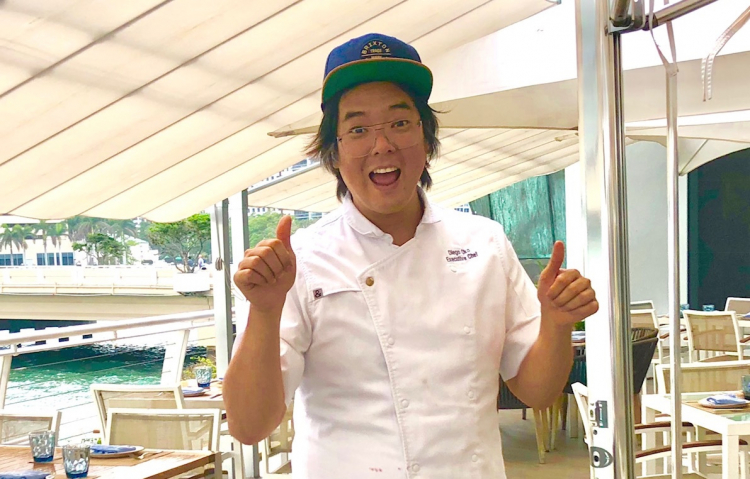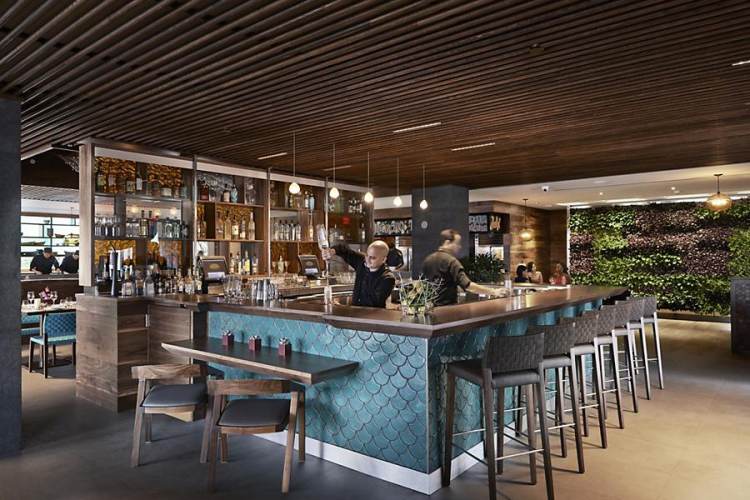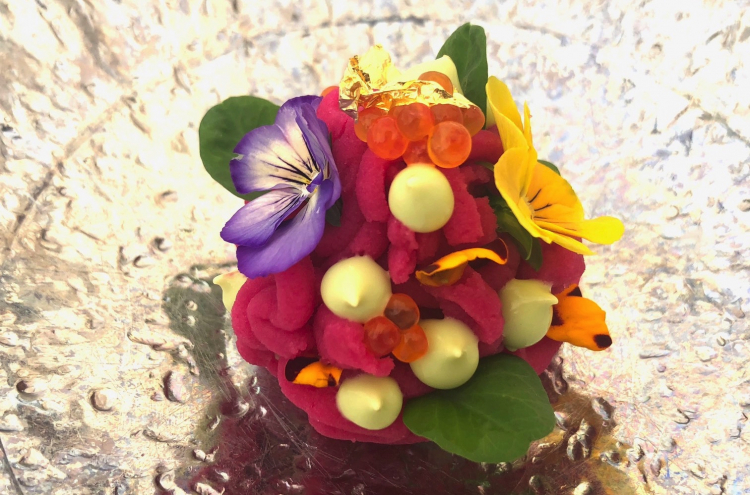«Ceviche is not a Peruvian exclusive. They make it in Thailand, Mexico and Panama too. Of course, our ceviche is more popular; but you can make it in any country by the sea. If high quality, fresh fish is available, you have already reached half the goal». It’s a pleasure to listen to Diego Oka, chef at Cebicheria La Mar, the crowded veranda overlooking the ocean from the Mandarin Oriental in Downtown Miami, in Brickell.
Oka, 35, is Gaston Acurio’s favourite pupil – the latter being a giant with 37 restaurant across a dozen countries. «I met the master by chance, in a supermarket in Lima», he recalls, «I told him I wanted to work for him. He called me for an internship at Astrid y Gaston. Later I worked in the best Japanese restaurant in town: I served him like a client every week, for 3 years. Then one day he asked me to work for his group». He was then 21. Many years later, Diego’s curriculum includes the opening of La Mar in Lima, San Francisco, Bogotá and Mexico City. And since 4 years ago he’s in chief of this establishment in Miami, a restaurant worth 10 million dollars per year, second only to folkloristic Joe’s Stone Crab in Florida.
Mar Miami is much more than a fantastic cebicheria. It’s a clear example of a cuisine that acquires value thanks to transnational influences. It sums up all the very different stimuli that turned Peruvian tradition into a worldwide success. A breach open in every wall, material and mental.
First, there’s the Nikkei influence. Japanese grandparents and parents from Lima, Oka is perfectly aware of the second largest community in the world (the first is in Sao Paulo, Brazil): «Our ceviche is delicious because we learnt to preserve fish, to use the knife with raw fish, and even how to stand in the kitchen from the Japanese. It is thanks to them if we now season ceviche right before service: 30 years ago, we used to make it early in the morning, leaving it in lime juice until lunchtime. It changed the fish so much you couldn’t recognise it». Today you won’t find a cevicheria in Lima open after early in the afternoon: «You cannot serve fish in the evening».

Diego Oka, Peruvian of Japanese heritage, 35, of which 13 beside Gaston Acurio
To tell the truth, this young man paid no attention to his family heritage at first: «I thought cutting fish into filets was just a prelude to cooking. I was so wrong: Japanese technique is the best in the world, for any kind of food». Try the
tiradito nikkei at
La Mar Miami, “Peruvian sashimi” with candied tuna, leche de tigre with tamarind, butter with sesame and pickled vegetables.
The Chinese (
chifa) influence is perhaps less known to the world but certainly has a stronger impact on the habits of the
Limeños: «Today there are some 3000 Chinese restaurants in our capital, much more than those serving Nikkei cuisine. The Chinese arrived in the mid-19th century, half a century before the Japanese, and since then the immigration has never ceased». With this premise, try the
Seabass with mushrooms, katsuobushi, sesame and fried rice on the side, which
Oka finishes at the table. Rich and popular flavours, a rollercoaster that joyfully lands in Beijing.
In the fabulous
Anticucho with veal heart, pepper, sauce of black mint, yellow peppers confit and chocolate, the African influence dominates. A whole treatise should be necessary, to tell the stories of the slaves from Ghana and Nigeria, their forced arrival in the shade of the Andes in the early 16th Century. Best move on to the
Ceviche with parmigiano and anchovy colatura, through which
Oka shows a strong Italian influence: «Two years ago I did an internship at
Osteria Francescana. The most beautiful 3 weeks of my life. Even just cleaning the floors was great. I’d go back tomorrow».

The bar inside (photo La Mar)

Causa (a typical potato-based Peruvian dish), king crab, smoked trout roe and avocado
Not that he’s a sedentary type: «With Mandarin Oriental we organise many 4-handed dinner events around the world: Atlanta, Switzerland, Bangkok, New York… Travelling is essential, in order to learn and set the palate».
Oka is soon going to be in Milan, during the Salone del Mobile. Before then, he will be in Murano shaping the new glass plates for his ceviche. Once ready, they will be handed by Chinese, Porto Ricans, Cubans, Costa Ricans, Argentinians, Americans, Venezuelans… The endless passports of his colourful brigade in Florida.
Translated into English by Slawka G. Scarso
La Mar By Gaston Acurio
Mandarin Oriental Hotel
500 Brickell Key Drive
Miami, Florida
United States
+1.305.9138358
dishes 13/29 dollars
Closed: never